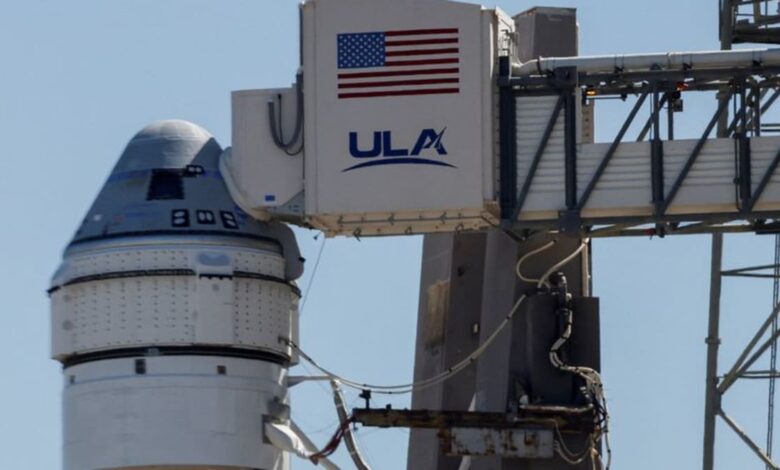Boeing’s new Starliner capsule set for first crewed flight to space station

CAPE CANAVERAL, Florida : Boeing Co’s new Starliner astronaut capsule was poised for a Monday night launch of its long-delayed inaugural crewed test flight to the International Space Station, two years after its first voyage without humans to the orbital laboratory.
The gumdrop-shaped CST-100 Starliner with two astronauts aboard was due for liftoff at 10:34 p.m. (0234 GMT on Tuesday) from NASA’s Kennedy Space Center in Florida, carried atop an Atlas V rocket furnished by the Boeing-Lockheed Martin joint venture United Launch Alliance (ULA).
Riding aboard the Starliner, designed to carry up to seven crew members, are veteran NASA astronauts Barry “Butch” Wilmore, 61, a retired U.S. Navy captain, and Sunita “Sunni” Williams, 58, a former Navy aviator and test pilot.
They have logged a combined 500 days in space over the course of two missions each to the space station. Wilmore is the designated commander for Monday’s flight, with Williams in the pilot seat.
Although Starliner is designed to fly autonomously, the crew can assume control of the spacecraft if necessary, and the test flight calls for Wilmore and Williams to practice maneuvering the vehicle manually.
With forecasts calling for a 95 per cent chance of favorable weather conditions, ULA completed a launch readiness review on Friday and gave a “go” to proceed toward countdown at Cape Canaveral.
The launch would mark the first crewed voyage to space using an Atlas rocket since the storied family of Atlas launch vehicles first sent astronauts, including John Glenn, on orbital flights for NASA’s Mercury program in the 1960s.
If all goes as planned, the capsule will arrive at the space station after a flight of about 26 hours and dock with the orbiting research outpost some 250 miles (400 km) above Earth early on Wednesday.
Wilmore and Williams are expected to remain at the space station for about a week before riding the Starliner back to Earth for a parachute and airbag-assisted landing in the U.S. Desert Southwest – a first for crewed NASA missions.
Success is vital before the Starliner gains final approval to begin routine operational flights under NASA’s commercial crew program, providing the space agency its first alternative to sending astronauts to low-Earth orbit from U.S. soil since Elon Musk’s SpaceX began doing so in 2020.
The test flight comes at an especially critical moment for Boeing, whose commercial aircraft unit has endured a succession of safety crises in recent years.
Getting Starliner to this point has been a fraught process for Boeing, beset by years of development setbacks and more than $1.5 billion in cost overruns for the aerospace giant on a $4.2 billion fixed-priced contract with NASA.
The first attempt by Boeing to send an uncrewed Starliner to the space station in 2019 failed due to dozens of software and engineering glitches. A second attempt in 2022 succeeded, paving the way for Monday night’s mission.
Depending on the outcome, Starliner is booked to fly at least six more crewed missions to the space station for NASA.
At a pre-flight briefing with NASA officials on Friday, Boeing vice president Mark Nappi said the company and the space agency were “in total agreement” that the Starliner was ready to fly with crew, adding, “we can’t be more confident.”
“Because it is a test flight, we give extra attention,” NASA chief Bill Nelson said. “That’s why we put two test pilots on board.”





